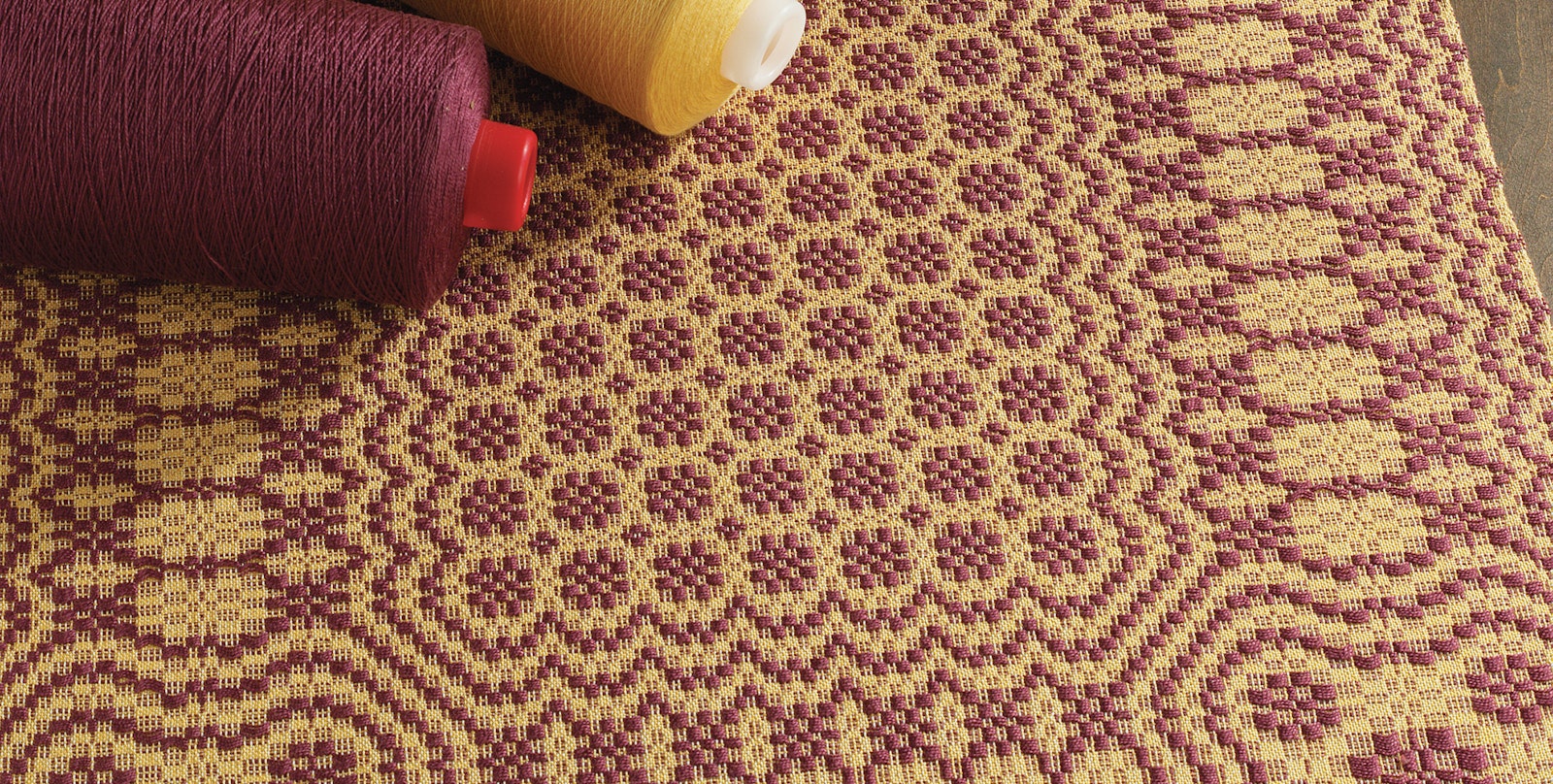Liz Moncrief is a frequent contributor to Handwoven. Her busy, enquiring mind keeps her looms humming with interesting new weaving projects. Here she is to share her latest quest! ––Anita
 | |
| Just one of Liz's forays into designing with blocks |
My roots still hold firmly to the architecture of my parents' Wisconsin home—a big monster of a thing, built in the Craftsman style with leaded glass in the windows. These stained glass panels were inserted seven feet high to provide a rainbow of light across the room, not necessarily a view. Then there was the leaded glass in the massive, red oak front door, framed by brick and concrete columns of the substantial front porch. This particular style is known as a four-square and emphasizes large geometrics: blocks, right angles, columns, horizontal and vertical lines equally pronounced with a very solid, no-nonsense attitude in structural integrity. Anyone who’s been through a Wisconsin winter, or even the "hell-fire and damnation" spring storms, will attest to the worthiness of this brick-and-mortar physique. If you know Gustav Stickley, Frank Lloyd Wright, or John Ruskin, all venerable leaders of the Craftsman era, then I know that you have the image in your head. If you’re not familiar with the style, then you can still enjoy the era, the architecture, and those distinctive leaded glass panels with your own interpretation of block weaving.
The fascinating thing about block weaving and unit weaves is that your design isn’t limited to a certain number of threads as in a point twill threaded 1,2,3,4,1,4,3,2,1, or in the size and sett of your threads. Designing with blocks lets you expand to whatever width or length suits your motif. If you prefer the slightly massive (again, think Craftsman style), to the diminutive, then this concept is for you. In addition, you can apply your design to so many weave structures that you could be busy for a very long time. Let me tell you what I’ve been up to lately using the recently issued Best of Handwoven: Technique Series: Comprehensive Guide to Designing and Weaving with Blocks.
I am challenging myself to attempt one design and apply it to as many weave structures as I can. I’ve played in rep weave (ripsmatta) with some small successes using my painted chenille and rayon, with color changes coming and going as they surface in the rep design. Rep weave is perfect for invoking leaded glass: vertical lines and distinct blocks of color. Look to Rosalie Neilson’s table mats on page 35, or Jean Scorgie’s equally appealing table runner on page 42. Do you see why I get excited?
My next foray was into weft-faced block weave, and that yielded another interesting mix of structure and color, which seem to work equally well in fine fibers for clothing and more substantial yarns in rugs or wall tapestries. Remember, I like BIG.
Summer and winter now plays on one loom, and I’m bouncing around with positive and negative spaces, but I haven’t figured out which way to go with the theme that started my challenge. The positive side, which is the applied design on a background, is noteworthy when viewed at close range but loses its appeal at a distance. Using the negative space (originally the background) as my element seems to work better at all ranges and angles. I believe this is your brain channeling your eye to look for the deeper meaning, or the pool of the interior. The brain is always eager to probe.
Although I usually weave with 4–8 shafts (one can only have so many looms, after all), Designing and Weaving with Blocks offers possibilities for weavers using up to 16 shafts. Again, you may or may not be a ‘recipe’ weaver, but consider challenging yourself with one central theme as in a design, a color (or a palette of colors), a fiber…and see how many directions you can go with it. Apply that theme to the weave structures of summer and winter, Poppana, doubleweave, taqueté, warp rep, and many more.
Designing and Weaving with Blocks may be your ticket to a whole new creative path. I admit that I don’t have even a mid-level grasp of this concept and need more investigation into the possibilities, but don’t we all need a challenge for the winter months? While you may not subscribe to ‘recipe’ weaving (duplicating an original design, color, structure from a published source), simply perusing one of the many available eBooks can take you down so many roads of thought, and even some deep-seated memories.
—Liz

